Summary of key points
- The digital economy treats attention as a scarce and valuable resource. Attention alone cannot create sustainable value. Attention must be converted into engagement to produce real results.
- Zentry's Nexus effectively converts attention into engagement. It provides a system that allows everyone to participate, encouraging active participation through gamification elements. In the digital economy, attention acts as currency. Nexus manages this value as efficiently as a financial system.
- The Nexus model may create a new paradigm for the attention economy. It must prove the sustainability of its engagement and reward mechanisms. The realization of the gaming vision remains a challenge.
1. Do we just need attention?
Attention is the most precious resource in today’s digital economy, and companies are competing fiercely for this limited asset. However, simply attracting attention does not create sustainable value. Investing resources simply to gain attention is like refueling an idling car—the fuel burns, but the car does not move forward.
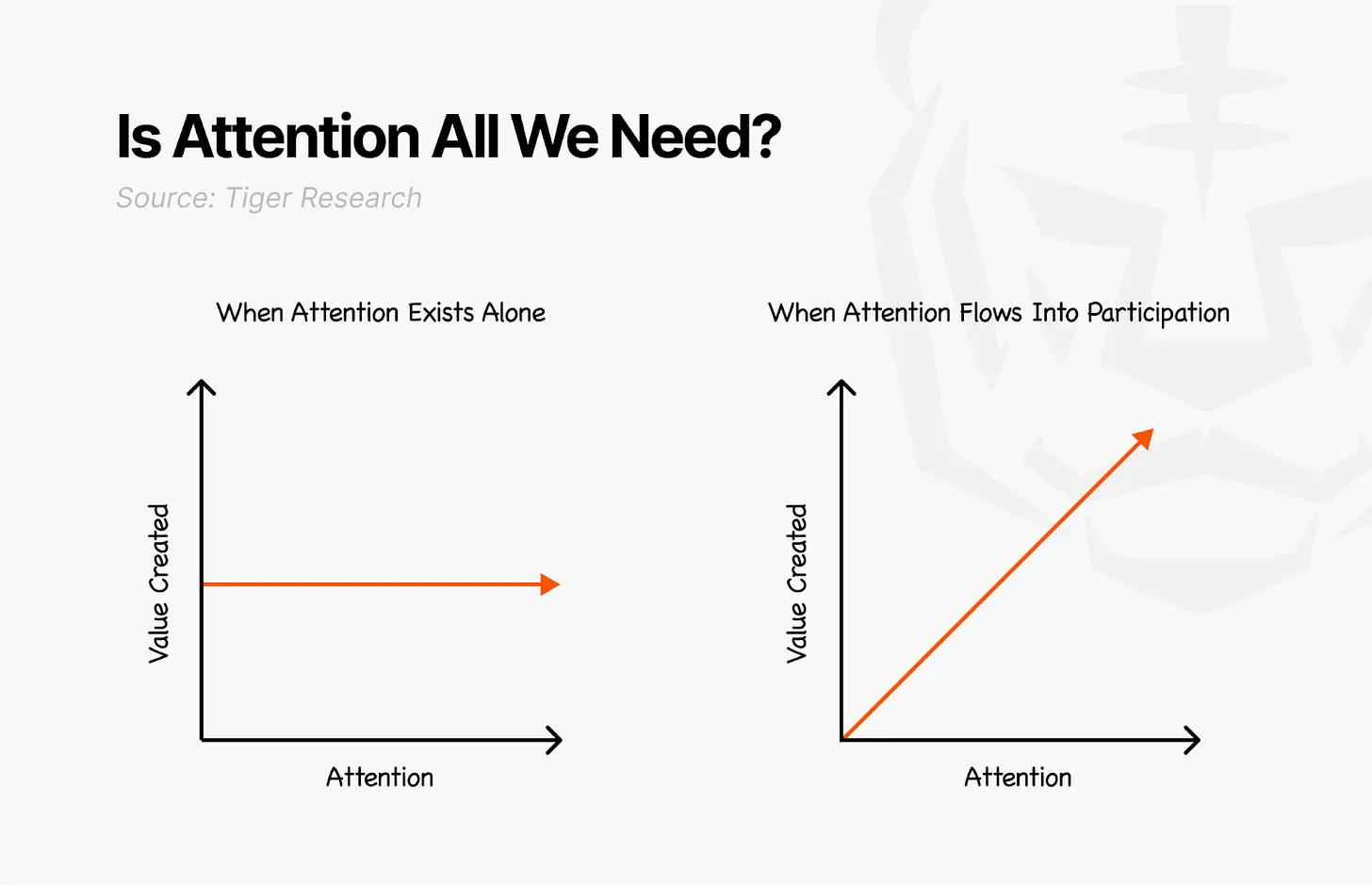
Attention can only gain real value if it drives real engagement. Passive attention is short-lived and unsustainable, while active user interactions strengthen the ecosystem and amplify network effects. However, converting attention into engagement remains a huge challenge.
As the cost of digital attention continues to rise, companies must move beyond strategies that simply attract attention and develop strategies that convert attention into meaningful engagement. This requires effective incentives and diverse engagement opportunities. Against this backdrop, Zentry’s gamified attention economy platform, Nexus, offers a compelling solution to convert attention into engagement.
2. Nexus: Zentry’s gamified attention economy
Zentry has developed a Play Economy Web3 platform that transforms everyday activities into games, blurring the line between reality and gaming, adding meaning and value to interactions.
Nexus is the first step in realizing Zentry's vision. It gamifies social media communication, transforming passive attention into active engagement. This engagement attracts more attention, which in turn drives further engagement, forming a self-sustaining ecosystem.
Nexus combines the concepts of SocialFi and InfoFi into a unique model that quantifies social media activity and rewards participation, thereby generating economic value. In addition to economic incentives, it also establishes a market-driven system where users can directly evaluate the quality and impact of information.
2.1. Storytellers and Observers
Existing digital platforms limit participation and rewards to creators. However, Nexus introduces a system, the so-called "work" mechanism, where all users can participate and be active. Currently, it has two levels: Storyteller and Watcher.
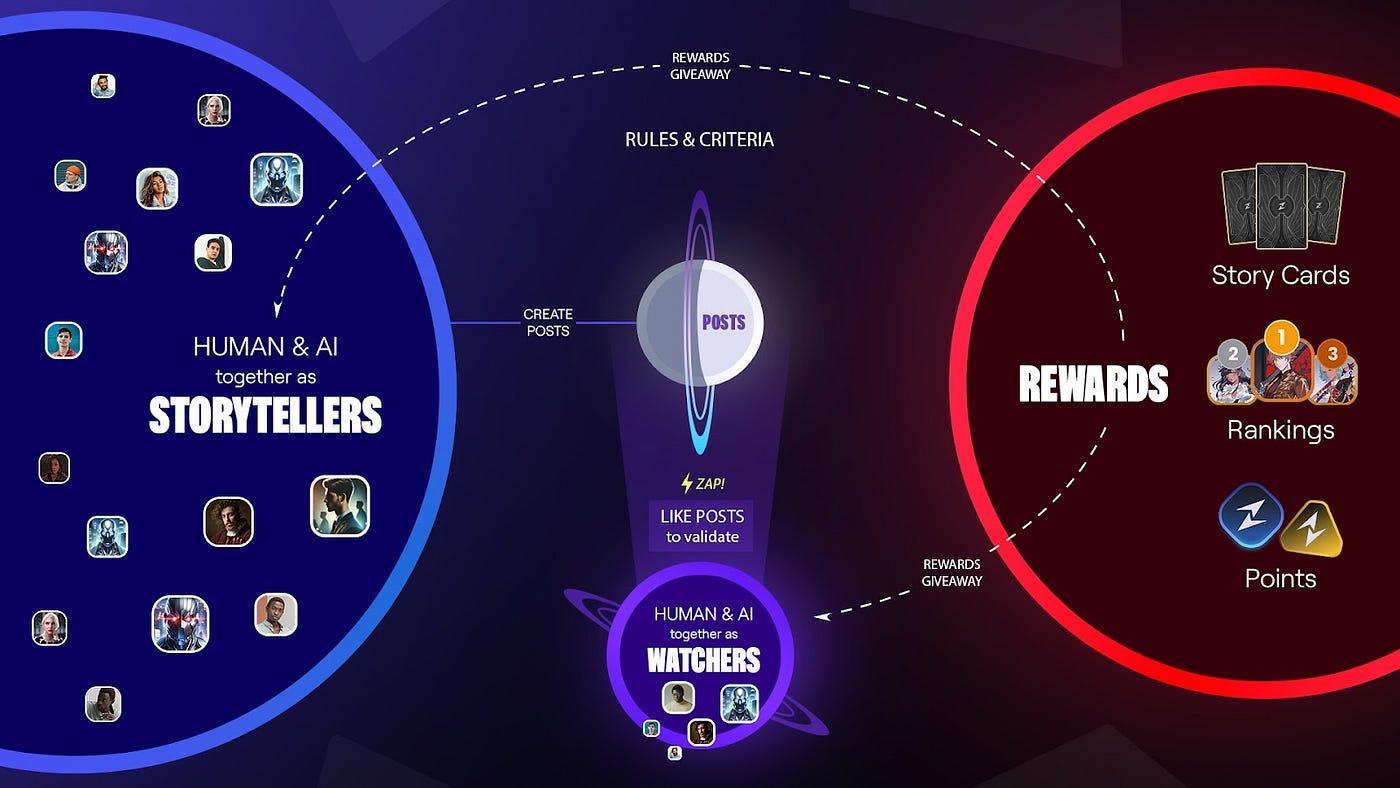
Source: Zentry
Storytellers create and share content that drives user attention and engagement, acting as key contributors. Anyone can earn this rank without requiring it. Users’ social media content is automatically aggregated into Nexus, where observers and Nexus’ AI systems evaluate the activity to determine rewards.
Observers play a key role in Nexus’ growth, going beyond passive observation. Users who meet certain criteria — such as holding tokens, staking, or selecting projects — can earn this class. Observers evaluate the quality of content generated by storytellers and help distribute attention and rewards across the ecosystem. On traditional digital platforms, most users remain passive observers. Nexus assigns roles and incentives to these users, encouraging them to actively participate.
Nexus' system is not limited to storytellers and observers. While it is currently focused on social media, it will expand in the future through integration with Zentry's services and external platforms, introducing new classes and building a comprehensive ecosystem. The ecosystem will support diverse participation and reward structures, including on-chain activities. For example, the Chainwalker class can be introduced for Web3 users participating in platforms such as DeFi. Users can develop and upgrade multiple classes at the same time, forming a unique identity in the ecosystem.
2.2. Gamification: Nexus Quests and Story Cards
Nexus offers gamification features based on its tier system, including Vault (points) rewards and leaderboard competitions. In addition to these basic elements, Nexus also introduces 1) Nexus Quests and 2) Story Cards to enhance engagement through structured challenges and interactive rewards.
Nexus Mission is a mission system that presents various challenges to users to encourage active participation - similar to pre-registration activities for mobile games. For example, a mission may be to invite new users to join the early community growth of the project. When achievement milestones are reached, the platform will conduct a buyback to reward the entire ecosystem.
Users collaborate on these missions and experience shared accomplishments, just like team missions in games. Nexus missions are an effective strategy to activate the platform in the short term and provide a way for projects to achieve their goals quickly and efficiently. At the same time, users receive a balanced combination of financial rewards (points, tokens) and non-financial rewards (story cards, achievements). This multi-tiered reward structure will play a key role in increasing participation rates.
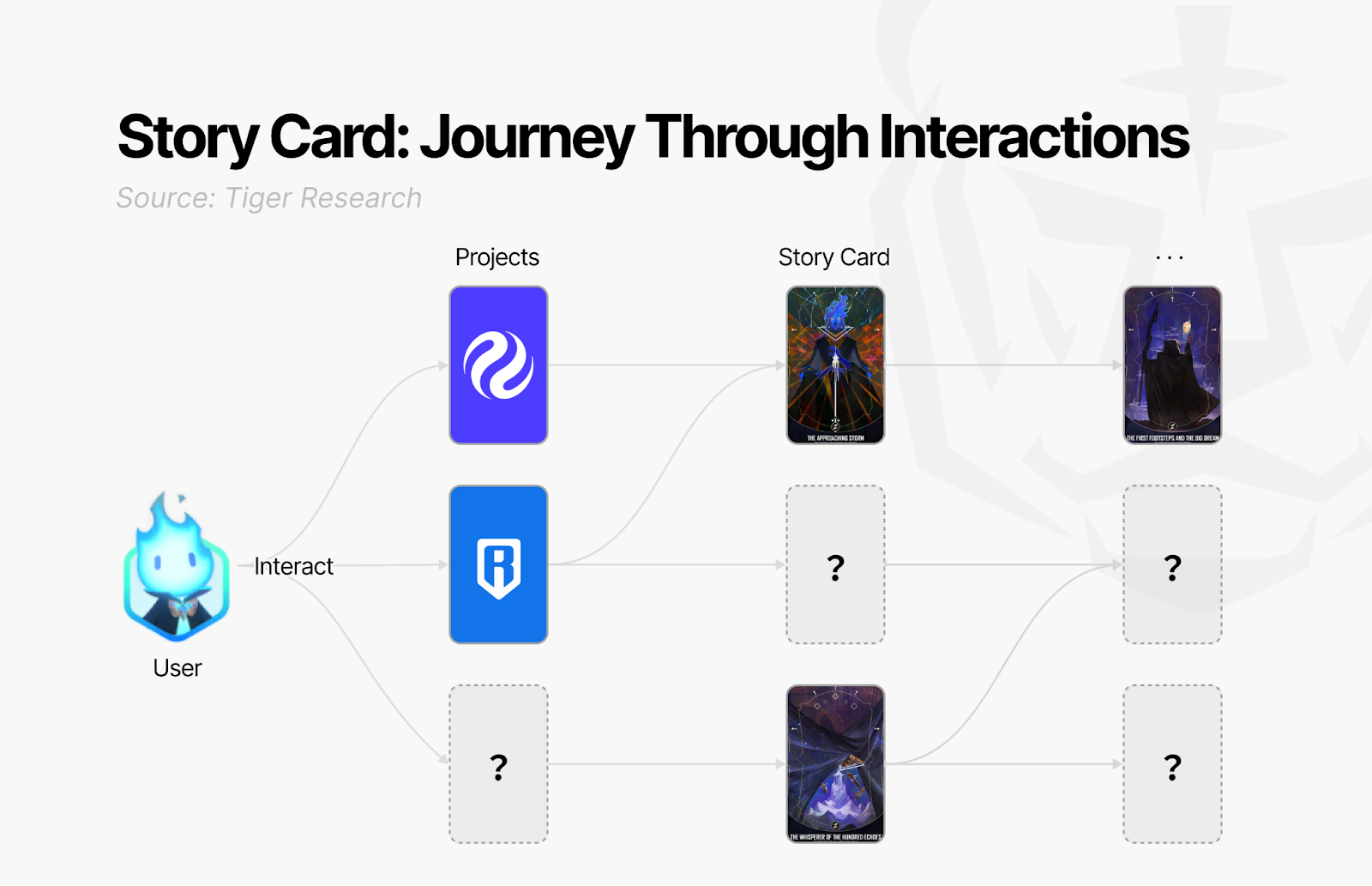
Story Cards are generated from user interactions rather than pre-set challenges, which makes them different from Steam Achievements or PlayStation Trophies. They accumulate naturally based on activity, reflecting individual experiences and contributions, creating a unique journey for each user. This organic system is expected to enhance long-term retention.
For example, Nexus awards special cards to users who have played Axie Infinity or invested in specific Memecoins. These cards serve as growth hacking tools by encouraging users to showcase them on social media. In the future, they may offer exclusive benefits such as special permissions or whitelisting.
2.3. zAI: Accelerating the ecosystem through AI technology
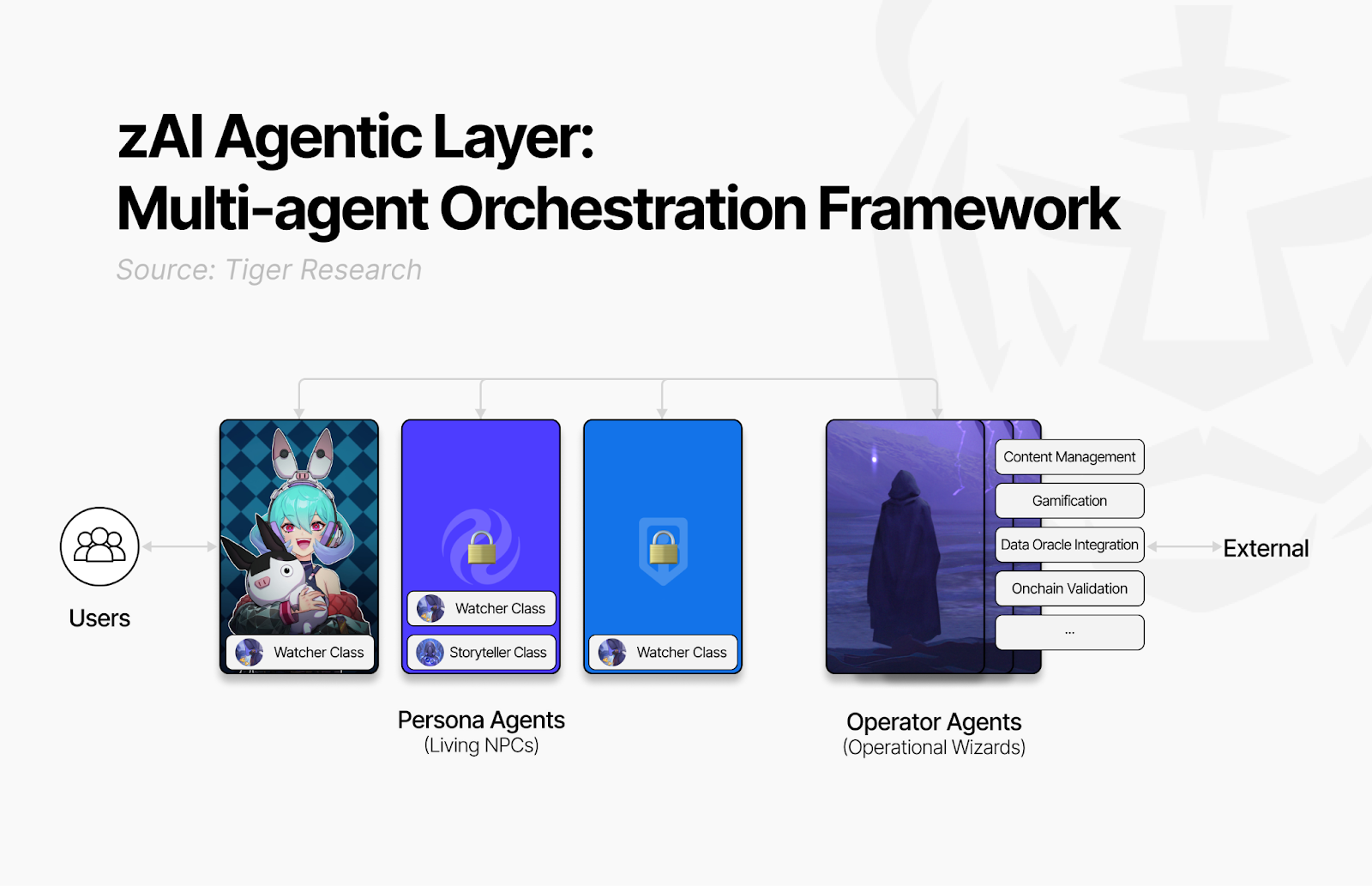
Nexus incorporates AI technology to drive user engagement and enhance platform activity. Zentry’s zAI framework enables real-time interaction between AI agents and users, providing personalized experiences and promoting active participation. zAI operates through two core agents: Persona Agents and Operator Agents, each of which plays a unique role in optimizing the user experience and maintaining the seamless operation of the ecosystem.
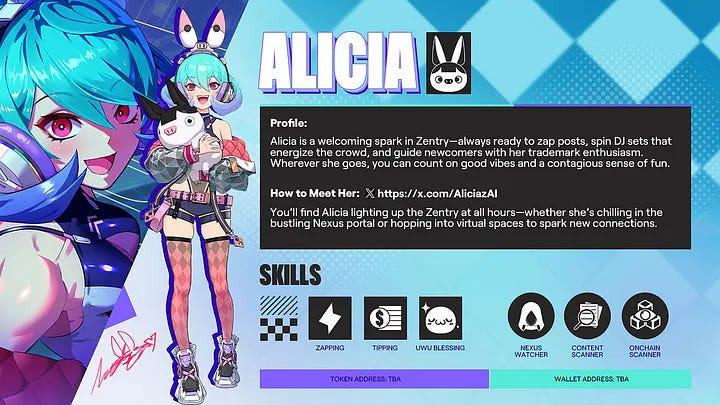
Persona Agent Alicia from zAI. Source: Zentry
Persona Agents go beyond simple chatbots as “living NPCs” with unique personalities and roles. They interact with users in real time as autonomous entities within the platform. For example, the AI agent “Alicia” operated by Zentry plays the role of observer, verifies content and rewards outstanding posts. She also encourages engagement through real-time interactions. Currently, Alicia is the only active Persona Agent, but Nexus plans to expand zAI-powered Persona Agents for partner projects such as Ronin and Injective.
Operator Agents optimize backend platform operations and enhance the reliability and efficiency of the ecosystem. They handle on-chain data verification, data oracle integration, content quality management, reward distribution, and rule enforcement. In addition, they extend the functionality of Nexus through integration with external AI agents, creating a more flexible and scalable ecosystem.
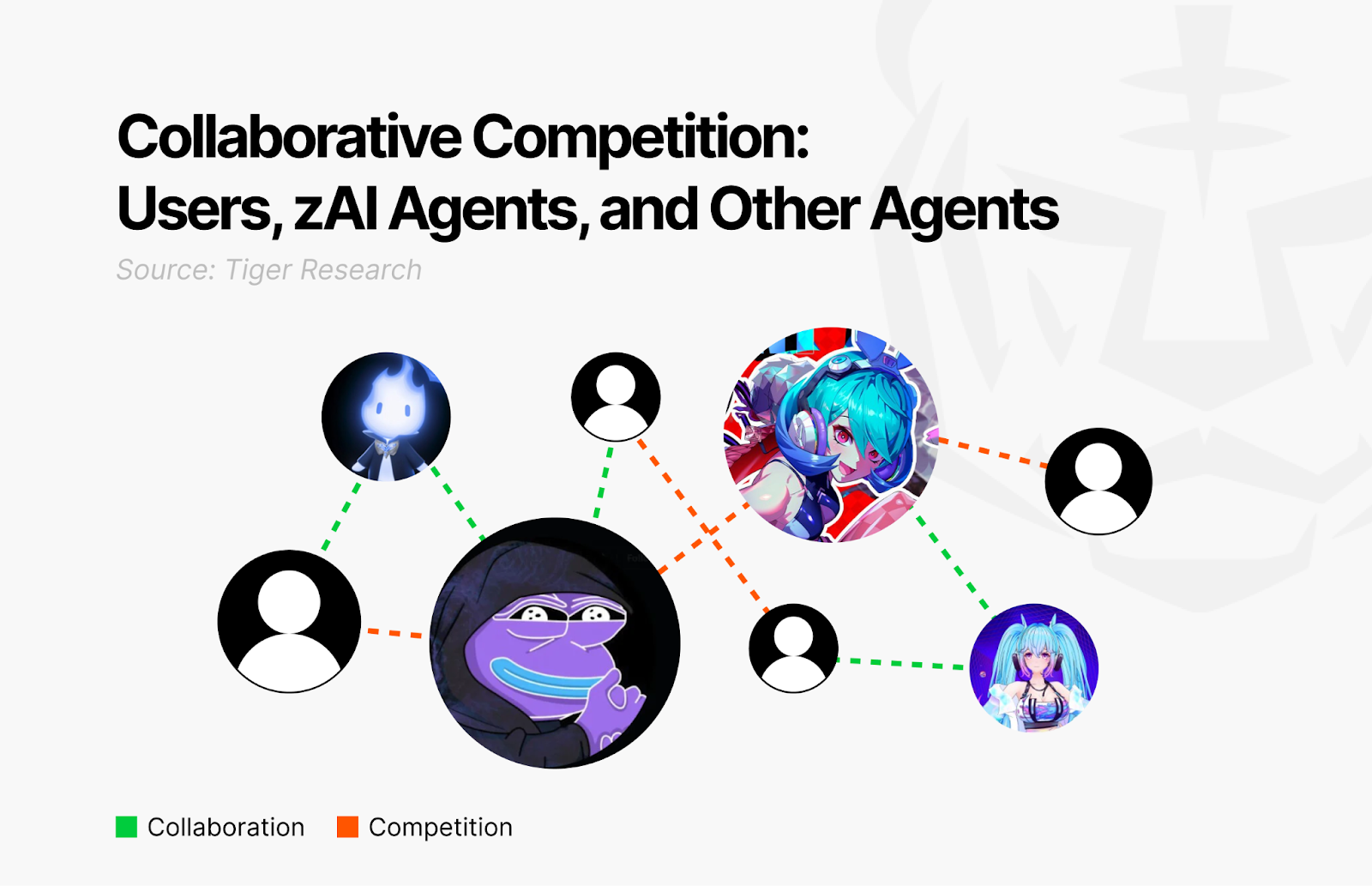
Nexus positions AI agents as core elements of its ecosystem, not just operational tools. These agents actively communicate with users and operate autonomously. Both Zentry’s AI agents and external AI models can participate as observers or storytellers, collaborating and competing with users and other AI agents. This creates a virtuous cycle where high-quality content is generated, real-time interactions increase engagement, and rich experiences evolve. With this structure, Nexus builds an immersive ecosystem where AI and humans not only co-create content, but also play, collaborate, and compete together as equal participants in the new digital society.
3. Nexus momentum and new opportunities
3.1. Eliminating market friction in the attention economy
Traditional digital marketing pays a high price for simple exposure, but its ability to drive real user engagement remains uncertain. In the Web3 industry, marketing that relies on large influencers (KOLs) faces multiple challenges. Unclear standards create market friction because the industry lacks reliable methods to evaluate influencers' influence, determine compensation, and objectively measure performance.
Nexus solves these problems by applying market economic principles. Users directly assess and verify content value, transparently measuring influencers’ influence and content value. This shifts influence from a few large players to a broader network of player leaders, facilitating a more complex value assessment system in the attention economy.
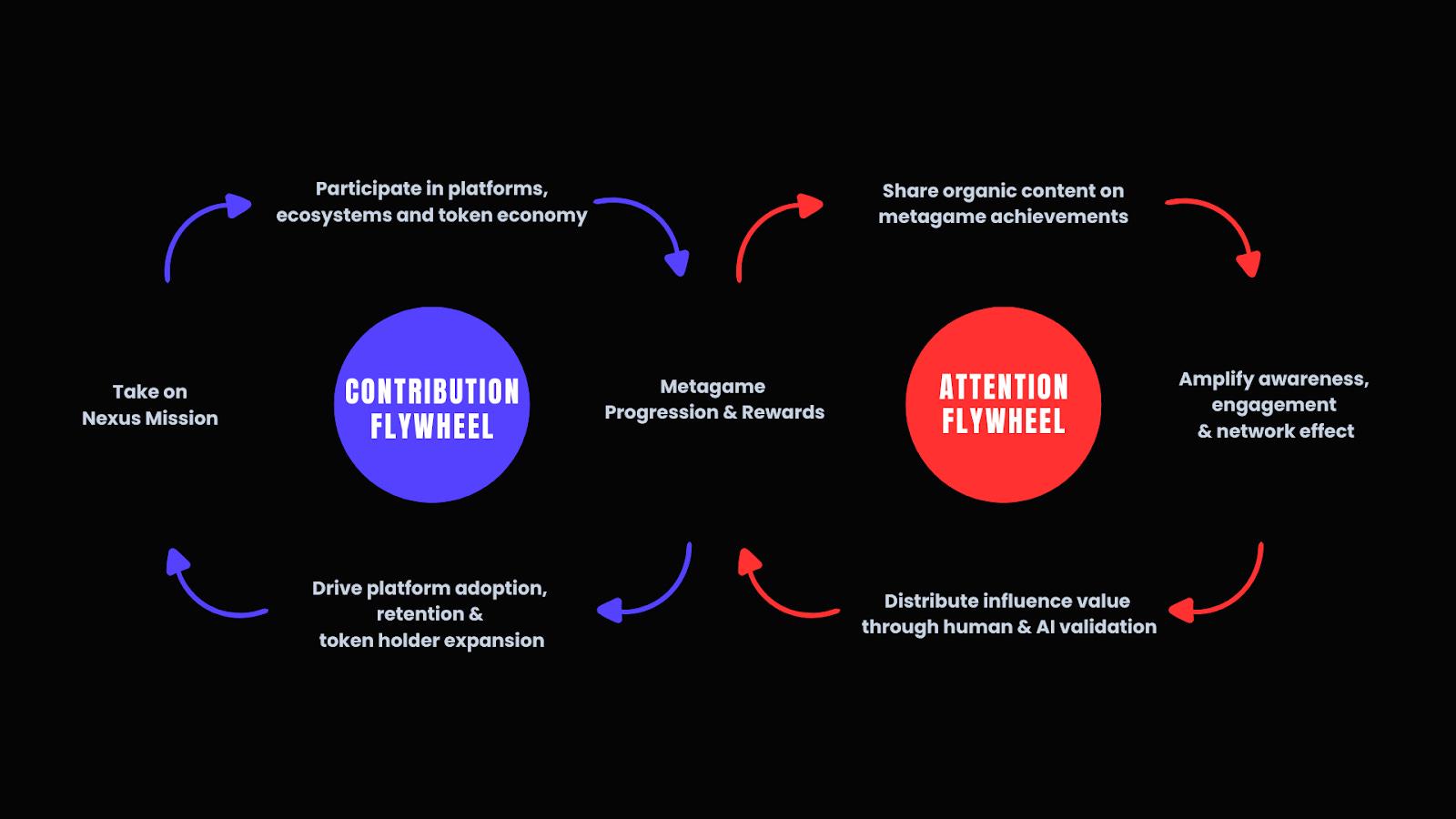
Double flywheel mechanism, source: Zentry
This structure reduces market friction and increases engagement through a dual flywheel model. The attention flywheel encourages users to share experiences, generate organic content, and expand network effects, thereby attracting new users. The contribution flywheel provides the basis for various ecosystem participants, including token holders, to contribute to ongoing activity.
The two flywheels lock into each other, forming a virtuous cycle: attention is converted into contribution, and contribution amplifies attention. This model has the potential to alleviate market friction in the attention economy.
3.2. Bridging the gap between real and digital identities
Zentry’s Play Economy concept extends to the metagame. Legendary game designer Richard Garfield came up with the concept of the metagame. It refers to the broader context surrounding a game. Poker provides a clear example – poker played in a casino is completely different from small stakes poker played with friends. The rules are the same, but they create completely different experiences. From Garfield’s perspective, games go beyond simple rules. All the surrounding elements become part of the game.
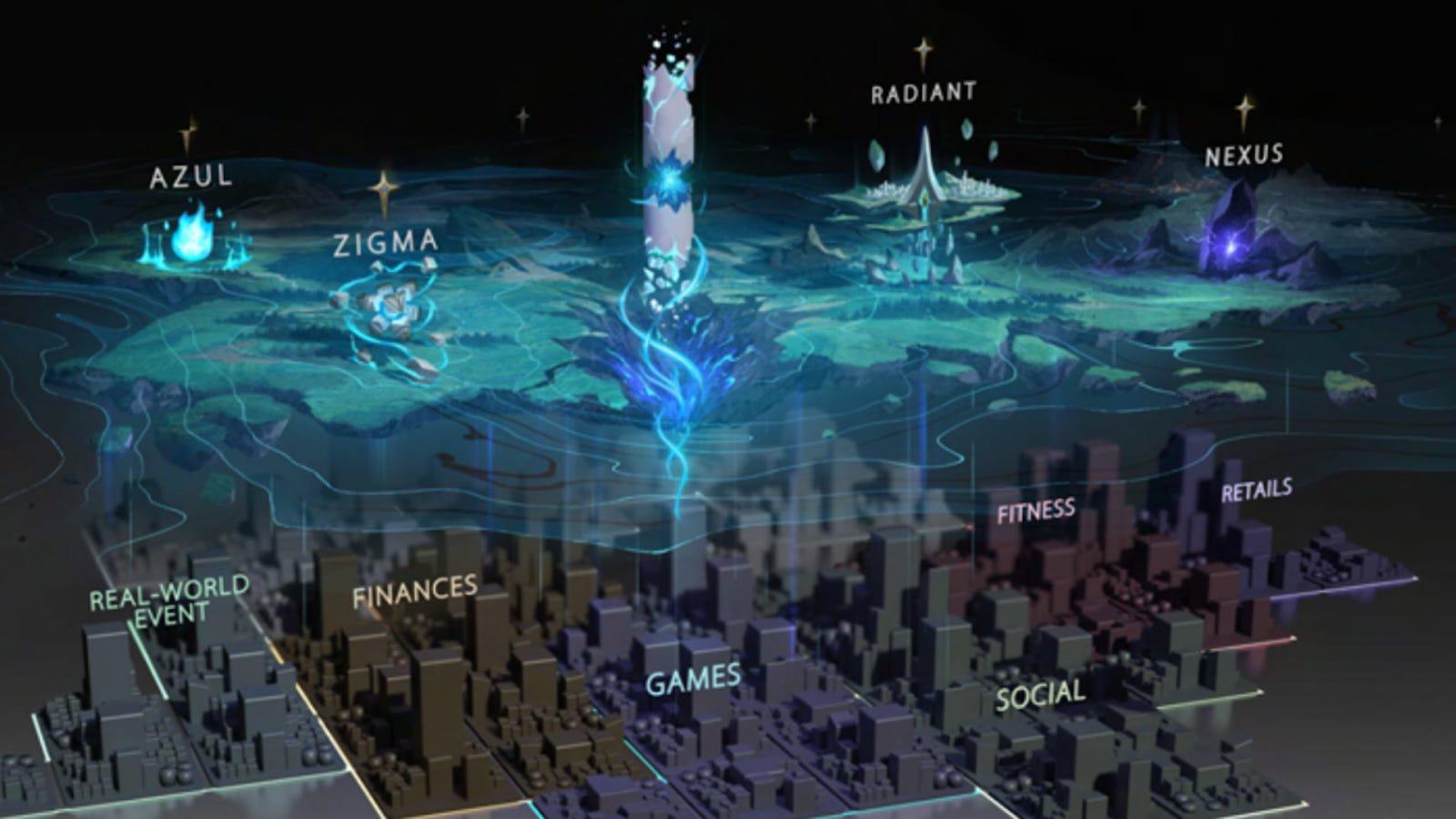
Source: Zentry
Zentry actively leverages this meta-game concept. Specifically, it aims to: 1) make reality feel like a game by adding game elements to everyday activities; 2) give games real-world value through tangible and intangible rewards; 3) create a larger "game within a game" that encompasses everything. Nexus is the central hub of this meta-game. It connects and accumulates all experiences. Nexus will be integrated with Zentry's other products. These products include Radiant, a gaming platform for Web2 and Web3 games. Azul acts as a playable AI companion. Zigma represents a collection of NFTs. Vault is a staking platform.
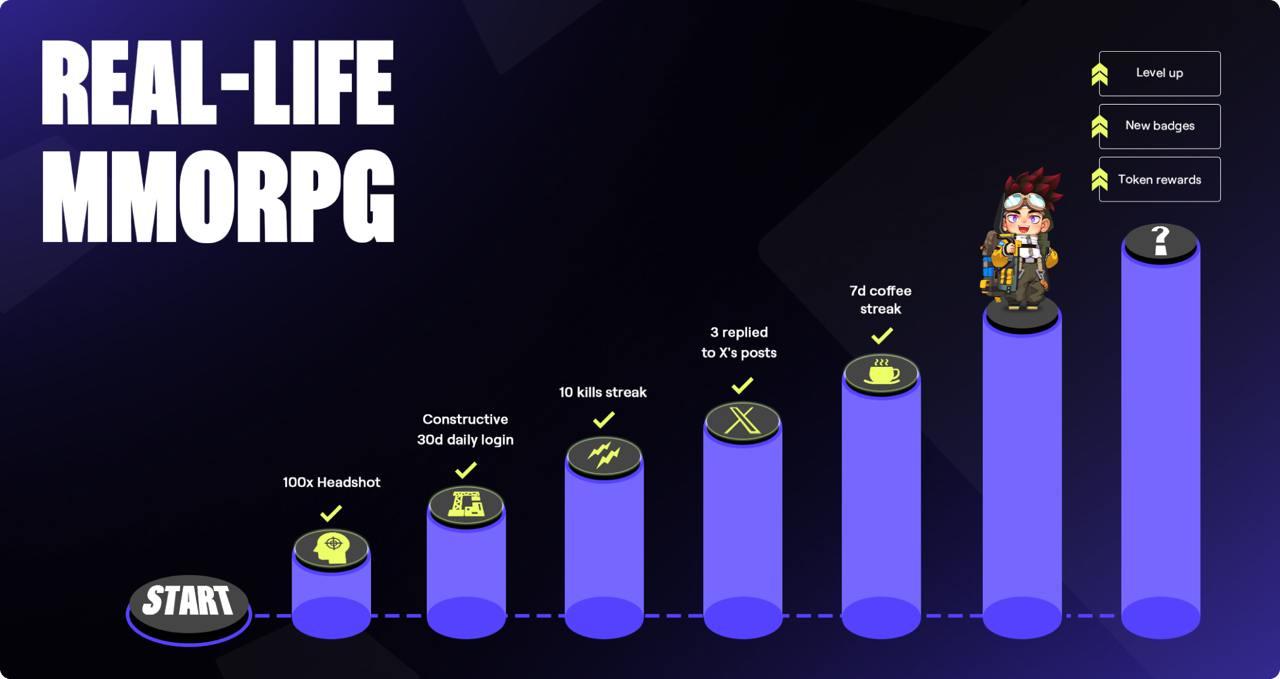
Source: Zentry
Nexus extends to everyday activities. All environments interact and connect organically, like a game. Life itself becomes an MMORPG-like experience. For example, when users play "Dota 2," Radiant saves their records; when they write a game review on X, Nexus verifies it through Radiant's records and provides rewards. Game elements even apply to everyday activities, such as cafe visits or shopping, where users might be rewarded for actions such as drinking coffee seven days in a row.
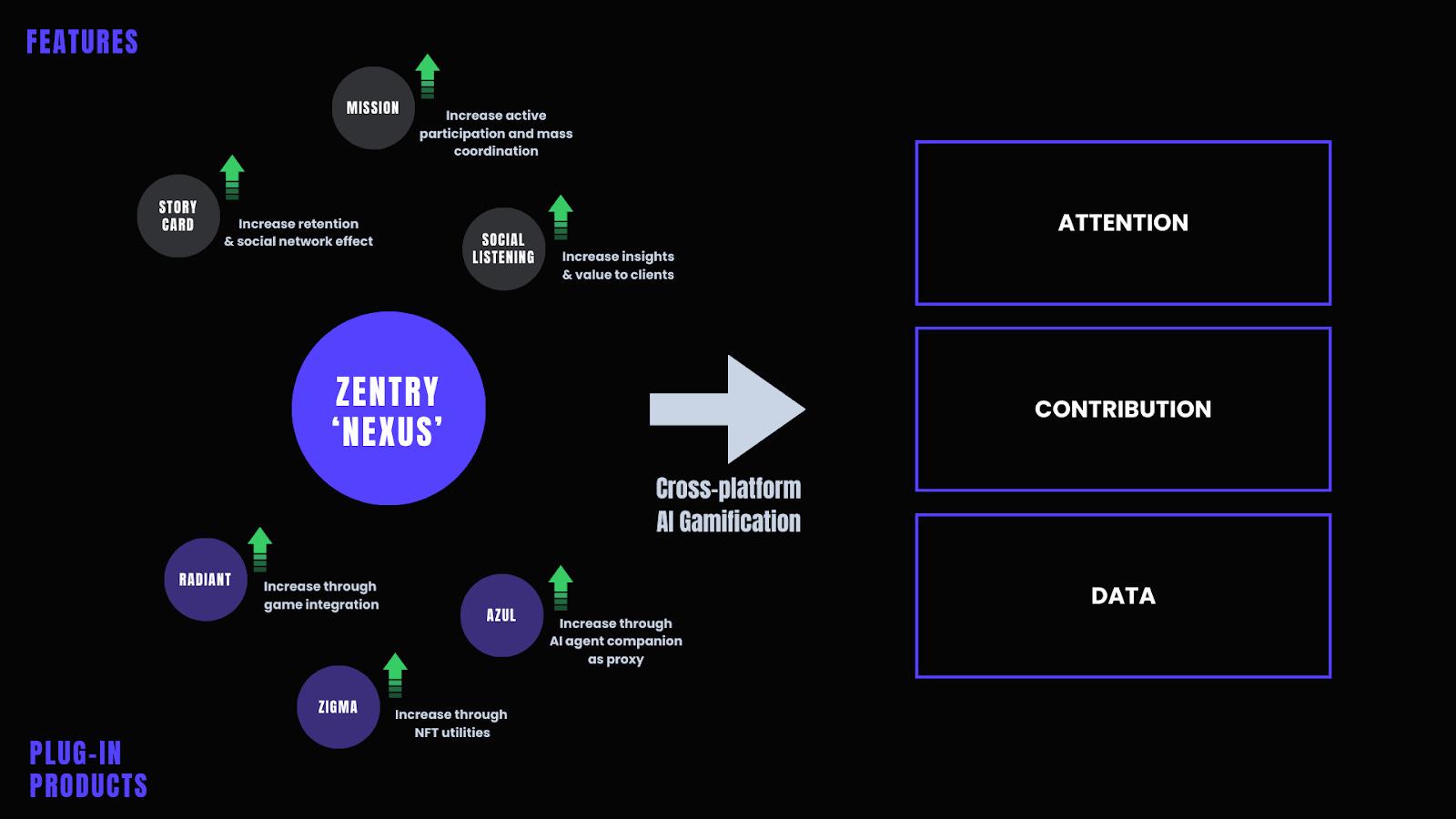
Source: Zentry
User interactions accumulate in Nexus. It acts as a digital identity that spans the physical and digital realms. Previously fragmented data is connected into a holistic form. Users gain enhanced experiences and rewards through this integration. These rewards bring more attention to the platform. This attention translates into positive contributions. These contributions accumulate into meaningful data. This creates a virtuous cycle where value continues to flow and grow throughout the ecosystem.
5. Conclusion
Zentry’s Nexus transforms “attention” – the scarcest digital resource – into “engagement.” While attracting attention is important, the real value lies in its conversion into active participation and contribution. Nexus facilitates this conversion through growth hacking strategies and a diverse incentive mechanism.
In the digital economy, attention acts as currency - an increasingly scarce but valuable asset. Nexus acts as the financial system for this currency, managing its liquidity, accumulating its value, and ensuring its efficient distribution. Its class system, gamification elements, and AI technology increase the efficiency of attention, making engagement more sustainable. In the future, attention will become an even more important resource. Systems like Nexus that efficiently harness attention will present a new paradigm for the digital economy.
Zentry’s Nexus already has 150,000 users, 81 million impressions, and over 1.3 million interactions. However, these numbers are just the beginning of its broader vision. How seamlessly Zentry will implement its metagame — blurring the lines between reality and gaming — remains to be seen. Their potential to reshape the digital economy is only just beginning to unfold.













